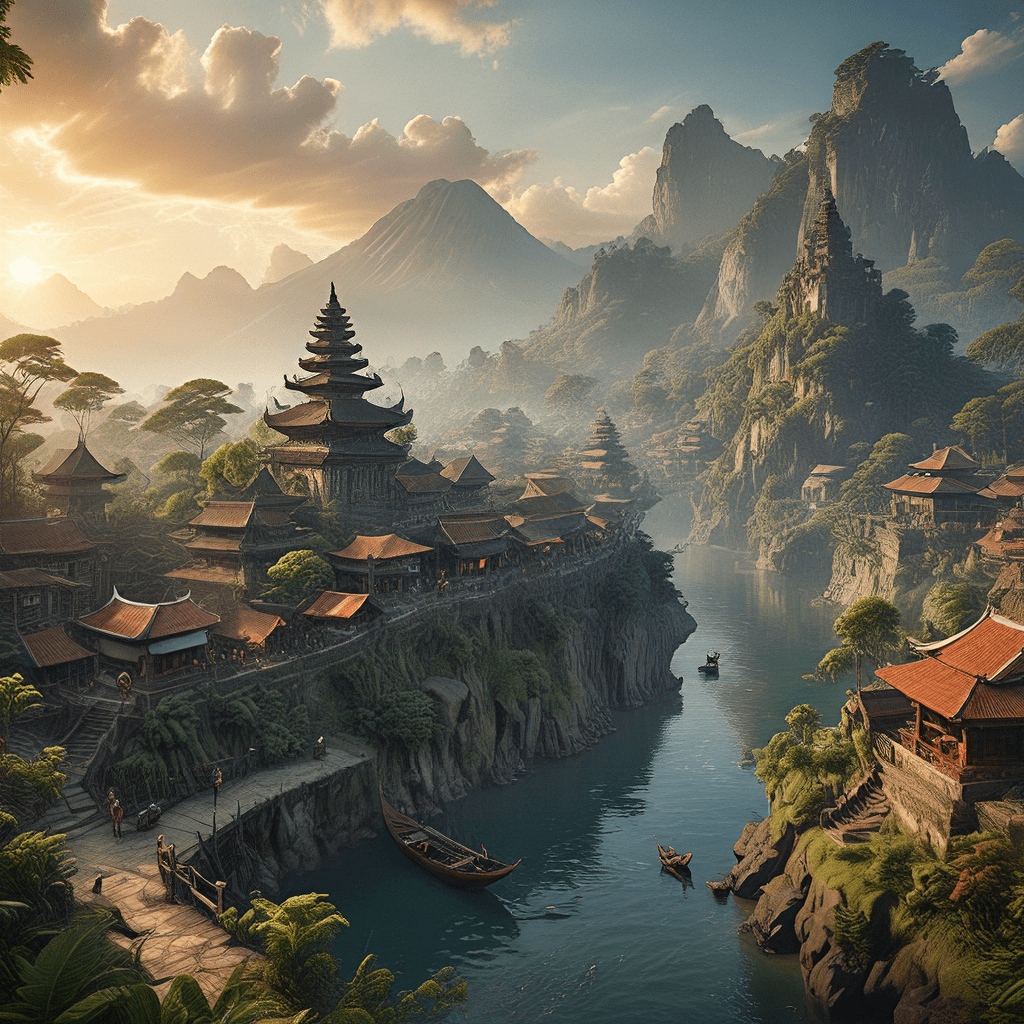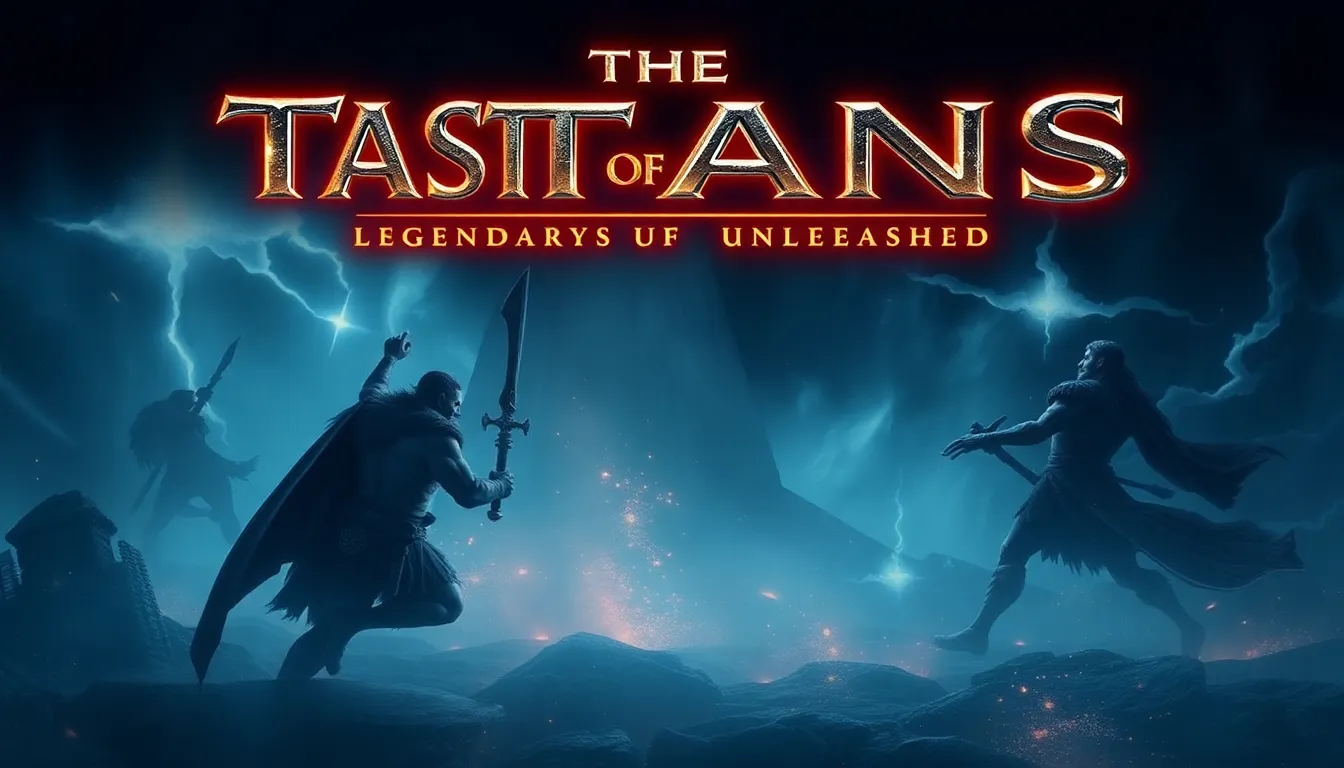The Enchanting Realm of Mythical Cities: A Tapestry of Indonesian Folklore
Indonesia, a land of diverse cultures and breathtaking landscapes, is also a treasure trove of captivating legends and myths. Among these stories, mythical cities hold a special place in the hearts and minds of Indonesians. These fantastical realms, often shrouded in mystery and wonder, are not merely tales of the past but also reflections of the rich tapestry of Indonesian beliefs, values, and aspirations. They offer a glimpse into the cultural heritage of the nation, revealing the enduring power of imagination and storytelling in shaping the collective identity.
Mythical Cities: Reflections of Indonesian Culture and Beliefs
The mythical cities of Indonesia are not just figments of imagination but also powerful symbols of cultural beliefs and values. They embody the aspirations, fears, and hopes of the people, reflecting the complexities of their social, religious, and spiritual life. These cities often serve as metaphors for the human search for utopia, for a place of peace, harmony, and abundance. They represent the yearning for a better world, free from the trials and tribulations of everyday life.
For example, the legendary city of Kediri, known as the "Golden City," reflects the desire for prosperity and material wealth. The underwater city of Bawah Laut, on the other hand, speaks of the longing for a lost paradise, a place untouched by the hardships of the world. The floating city of Kahyangan, nestled among the clouds, embodies the yearning for spiritual enlightenment and transcendence. These stories, passed down through generations, are a testament to the enduring power of myth and legend to shape our understanding of ourselves and our place in the world.
The Origins of Mythical Cities: Exploring the Roots of Legend
The origins of these mythical cities can be traced back to a confluence of factors, including oral storytelling traditions, religious beliefs, and historical events. The Indonesian archipelago, with its diverse cultural heritage, has a rich oral tradition, where stories are passed down from one generation to the next, often evolving and adapting over time. These stories, woven into the fabric of everyday life, helped to explain the world around them, offering answers to questions about the origins of life, the forces of nature, and the mysteries of the universe.
Many of these mythical cities are linked to ancient Indonesian religions, such as Hinduism, Buddhism, and animism. These beliefs, with their emphasis on gods, spirits, and the supernatural, provided the fertile ground for the creation of fantastical stories about hidden cities, magical beings, and supernatural powers. Historical events, such as the rise and fall of ancient kingdoms and the arrival of foreign powers, also contributed to the creation of these legends. The remnants of ancient civilizations, the ruins of lost cities, and the stories of forgotten empires fueled the imagination of the people, giving rise to tales of mythical cities and lost civilizations.
Kediri: The Golden City of the East
Kediri, a name synonymous with wealth and splendor, is one of the most prominent mythical cities in Indonesian folklore. Located somewhere in the eastern part of the archipelago, it is said to be a city of dazzling beauty and unimaginable riches. The city is described as being adorned with gold and jewels, with palaces built of precious metals and streets paved with glittering stones. Its inhabitants are said to be blessed with eternal youth, boundless wealth, and wisdom beyond measure.
Legends surrounding Kediri often involve a powerful king or queen, possessing magical powers or divine lineage. The city's wealth is often attributed to its connection to the supernatural, with stories of enchanted forests, talking animals, and magical artifacts adding to the allure of this lost paradise. The story of Kediri embodies the human desire for abundance and prosperity, a yearning that transcends time and culture.
The Underwater City of Bawah Laut: A Tale of Lost Civilization
While Kediri conjures images of a golden age of prosperity, the underwater city of Bawah Laut speaks of a more melancholic tale, a lost civilization swallowed by the depths of the ocean. The legends surrounding Bawah Laut tell of a thriving city, once a beacon of civilization, that was submerged beneath the waves, either due to divine wrath, natural disaster, or the treachery of man.
This city, often depicted as being adorned with coral and pearls, is described as a place of unparalleled beauty and sophistication. The inhabitants, often depicted as merfolk or other aquatic creatures, are said to possess advanced knowledge and technology, surpassing even the most learned scholars of the surface world. The story of Bawah Laut serves as a cautionary tale, reminding us of the fragility of human civilization and the power of the natural world. It also reflects the fascination with the unknown depths of the ocean, a place of mystery and wonder that has captivated human imagination for centuries.
The Floating City of Kahyangan: A Paradise Above the Clouds
Kahyangan, meaning "heaven" in Indonesian, is a mythical city that embodies the spiritual aspirations of the people. It is often described as a floating city, nestled among the clouds, a place of perfect harmony and eternal bliss. The inhabitants of Kahyangan are said to be free from worldly desires and distractions, living in a state of pure spiritual enlightenment.
Tales of Kahyangan often feature deities, sages, and other spiritual beings, who guide and protect the city's inhabitants. The city is said to be filled with vibrant gardens, sparkling fountains, and magnificent palaces made of precious stones. The inhabitants are said to possess supernatural powers and live in a state of perfect peace and harmony. The city of Kahyangan is a symbol of the human yearning for spiritual enlightenment and a place of peace and tranquility beyond the reach of earthly woes.
The Myth of the Seven Cities of Gold: A Treasure Trove of Legend
The myth of the Seven Cities of Gold, though not exclusively Indonesian, holds a significant place in the country's folklore. These mythical cities, said to be overflowing with gold and other precious treasures, are often associated with the arrival of Spanish conquistadors in the Americas. The story of the Seven Cities of Gold is believed to have originated with the indigenous people of the Americas, who told tales of vast, wealthy cities hidden deep within the heart of the continent.
These tales made their way to Europe, reaching the ears of Spanish explorers who were eager for wealth and glory. The myth of the Seven Cities of Gold fueled many expeditions, leading to the exploration of the Americas and the eventual conquest of the Aztecs and Inca. The story of the Seven Cities of Gold, though ultimately proven to be a myth, is a testament to the enduring power of human desire for wealth and the allure of the unknown. In Indonesia, the myth of the Seven Cities of Gold is often associated with the legendary kingdoms of ancient Java, where stories of vast treasuries and hidden gold mines persist to this day.
Theories Behind the Mythical Cities: Unveiling the Truth
The existence of these mythical cities has been the subject of much speculation and debate. Some scholars believe that these legends are based on real historical events, distorted and embellished over time. They point to the existence of ancient ruins and archaeological sites as evidence of lost civilizations, which may have inspired these tales. Others argue that these stories are purely imaginative, a product of the collective unconscious of the people, reflecting their hopes, fears, and aspirations.
It is important to note that the mythical cities of Indonesia are not meant to be taken literally. They are symbolic representations of cultural beliefs and values, reflecting the human search for meaning, purpose, and a better world. They are a testament to the enduring power of storytelling to shape our understanding of the world and ourselves.
The Role of Geography and Natural Phenomena in Shaping the Legends
The geography of Indonesia, with its vast archipelago, diverse landscapes, and active volcanoes, has undoubtedly played a significant role in shaping the legends of mythical cities. The towering mountains, deep valleys, and mysterious caves have provided fertile ground for the imagination. The volcanic eruptions, earthquakes, and tsunamis that have shaped the archipelago have also contributed to the creation of stories about lost civilizations, hidden cities, and supernatural forces.
The natural phenomena of Indonesia, such as the aurora borealis, the bioluminescence of fireflies, and the shimmering mirages that appear over the desert, have also inspired tales of magical cities and celestial realms. The natural world, with its beauty, mystery, and power, has always been a source of inspiration for human imagination, leading to the creation of stories that reflect our awe and wonder.
The Enduring Legacy of Mythical Cities: A Source of Inspiration and Wonder
The mythical cities of Indonesia continue to captivate the imagination of people around the world. They are not just stories but also a testament to the enduring power of human creativity, our capacity to dream, and our yearning for a better world. These legends are a source of inspiration, reminding us of the beauty and mystery of the world around us, and the importance of preserving our cultural heritage.
The stories of these mythical cities, passed down through generations, continue to resonate with audiences, inspiring artists, writers, and musicians. They are a reminder that even in a world of science and technology, the human spirit still yearns for magic, mystery, and the unknown.
FAQ
Q1. Are the mythical cities of Indonesia real?
A1. The mythical cities of Indonesia are not real in the literal sense. They are products of imagination, reflecting cultural beliefs and values. However, some scholars believe these legends may be based on real historical events, distorted and embellished over time.
Q2. What are some of the most popular mythical cities of Indonesia?
A2. Some of the most popular mythical cities of Indonesia include Kediri, Bawah Laut, Kahyangan, and the Seven Cities of Gold.
Q3. What is the significance of these mythical cities?
A3. The mythical cities of Indonesia are significant because they reflect the cultural heritage, beliefs, and aspirations of the people. They serve as symbols of prosperity, spirituality, and the yearning for a better world.
Q4. How do these mythical cities influence Indonesian culture?
A4. These mythical cities continue to inspire artists, writers, and musicians, influencing the cultural landscape of Indonesia. They are a source of pride, identity, and wonder for the people.
Q5. Where can I learn more about these mythical cities?
A5. You can learn more about the mythical cities of Indonesia by reading books and articles on Indonesian folklore and mythology, visiting museums and cultural centers, and talking to local elders and storytellers.



